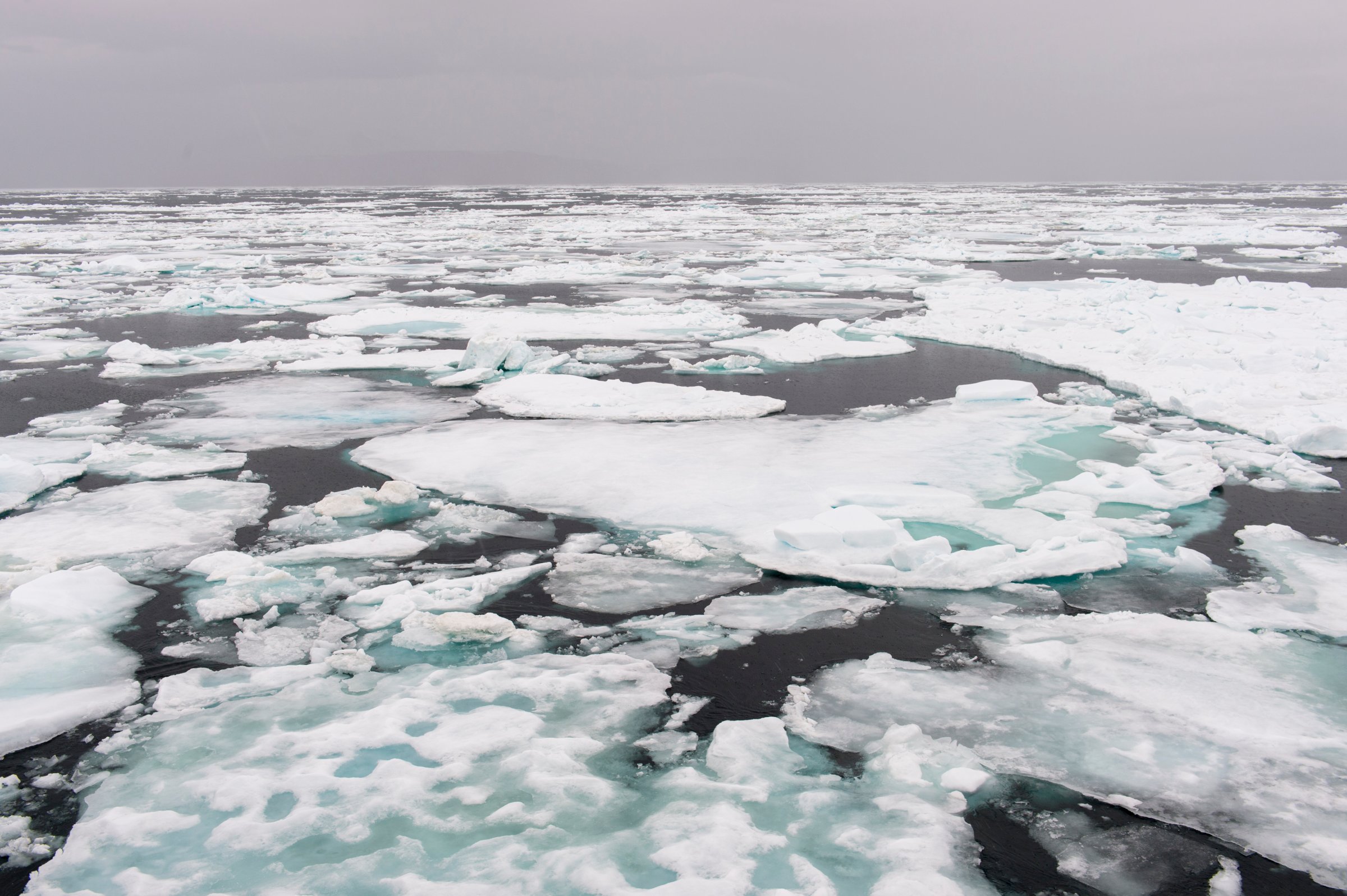
The high point for Arctic sea ice levels hit a record low this winter, sea ice monitors said Wednesday.
Sea ice covered approximately 5.57 million square miles on March 7, nearly 500,000 square miles below the average winter high in recent decades, according to preliminary numbers from the National Snow and Ice Data Center (NSIDC). Arctic sea ice cover fluctuates from season to season. In early March, it typically hits its highest level of coverage before melting again in the spring and summer months.
Scientists attribute the low sea level to an usually warm fall and winter. Temperatures around the globe have spiked in recent years due to man-made climate change, leading to several years of record-breaking heat, and few places have been hit harder than the Arctic. Temperatures over some parts of the Arctic were more than 5°C (9°F) warmer than average between October and February, according to NSIDC.
Read More: It’s Hard to Describe Just How Badly the Arctic Is Doing
The report is the latest in a string of disappointing news about the state of the Arctic. A December report from the National Oceanic and Atmospheric Administration (NOAA) found that the Arctic experienced the lowest snow cover and highest land temperatures on record last year. And sea ice levels also reached a record low last fall.
Scientists studying man-made climate change worry that the situation in the Arctic may bode poorly for the rest of the planet. Countries reached an agreement in 2015 to try to keep temperatures from rising more than 2°C (3.6°F) above pre-industrial levels by 2100, a target scientists say is the level the world must meet to avoid the worst effects of climate change.
More Must-Reads from TIME
- Donald Trump Is TIME's 2024 Person of the Year
- Why We Chose Trump as Person of the Year
- Is Intermittent Fasting Good or Bad for You?
- The 100 Must-Read Books of 2024
- The 20 Best Christmas TV Episodes
- Column: If Optimism Feels Ridiculous Now, Try Hope
- The Future of Climate Action Is Trade Policy
- Merle Bombardieri Is Helping People Make the Baby Decision
Write to Justin Worland at justin.worland@time.com